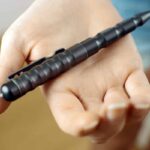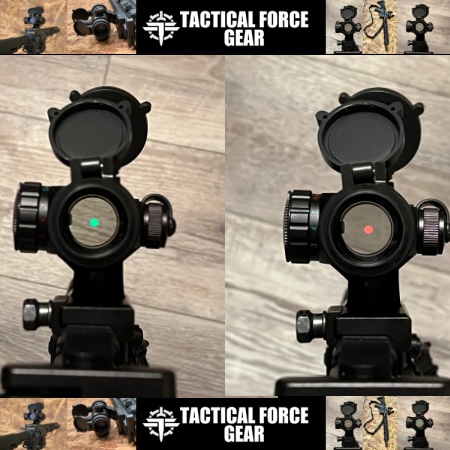As an outdoorsman selecting a sidearm, what features should you look for when picking a field pistol?
Over the past centuries, we have seen a constant focus on the types of pistols and calibers that are suitable for use in the field. In The Prairie Traveler, a contemporary piece on Manifest Destiny, there is a good discussion on what Colt you should carry—the percussion .36 being the surprising recommendation for the era, even over the .44.
These older sources are invaluable as we look at the general nature of what we are putting in our belts and chest harnesses today. I’ve been carrying pistols for various uses in the field my entire adult life as a hiker, fisherman, hunter and general outdoorsman. My choices have sometimes been motivated by nostalgia as much as practicality, but what is true is that there’s no one right answer for you.
There is, however, a fascinating backstory to all this that is worthy of note.
The Outdoorsman’s Sidearm
Pistols have a long history—that much is absolutely certain. We don’t have the space here to explore every culture and their relationship to handguns, but it’s true that there has always been a practical need for a firearm that is compact and can be carried on the person ready to use. While there are some words I will use interchangeably here, I will be referring to these guns as pistols. (Sorry to those who like to make a distinction for revolvers.)
Historically, what we call handguns were referred to as pistols, typically distinguished by mode of carry, be it saddle holster, belt or pocket. In 1835, Sam Colt had a patent for a “revolving firearm,” which is a bit too vague for use here. In the American lexicon, there wasn’t much specialization in this class of arm until 1847.
Colt’s early Paterson designs weren’t very successful. The Texas Rangers had an early success in battle against Native Americans on the frontier using the Paterson. A modern, much more powerful firearm was requested by Ranger Sam Walker, leading to the famous 1847 Walker Colt. This revolver was arguably the first truly modern Colt, and by default, the first of what we would call a field pistol. The revolver after this point would become (and could be argued still is) the dominant field pistol.

The idea that an individual would not just be able to have a gun on them, but one that would not require immediate reloading after its one use, was revolutionary. Not only that, but each shot would also have enough power to immediately kill, or at least severely injure, an attacker at close to medium range. Most “repeating” arms of this time were small and woefully underpowered, unreliable and even dangerous to the user. The Walker was no joke and could bring some hurt where it was due.
With reload time and reliability at a distinct advantage over competing designs of the era, the Colt was the one to beat. Over time, we have seen that translate into the Colt, then Smith & Wesson and eventually modern guns like Glock, taking the preferred spot in the field. The base notion of all of this has been that these field guns are reliable and powerful first, high capacity second. These traits are critical because in the mind of modern outdoorsmen, revolvers are only recently challenged by rounds like 10mm Auto, itself the beneficiary of lots of very positive press.
The basis of the field gun is that it needs to be able to deliver power and accuracy, not just as a self-defense option for bears (a somewhat rare situation overall), but serve as a stopgap for signaling, hunting and general-purpose survival. In short, it needs to be a functional backup to a rifle or shotgun, but not a true replacement. On its own, the field pistol statistics are up to the end user.
The ammunition in question has its own flavor—such as the retro hardcast, even in semi-automatic pistols. Buffalo Bore has earned a reputable name producing loaded cartridges on the high end of the power scale. Having shot many of their most potent loads, I can honestly say that many are downright painful in packable revolvers, but overall pleasant in semi-auto calibers like 9mm and .45 ACP. I have killed large whitetails with the Buffalo Bore 255-grain Hardcast Outdoorsman in .45 ACP at about 40 to 50 yards out of a 5-inch 1911.
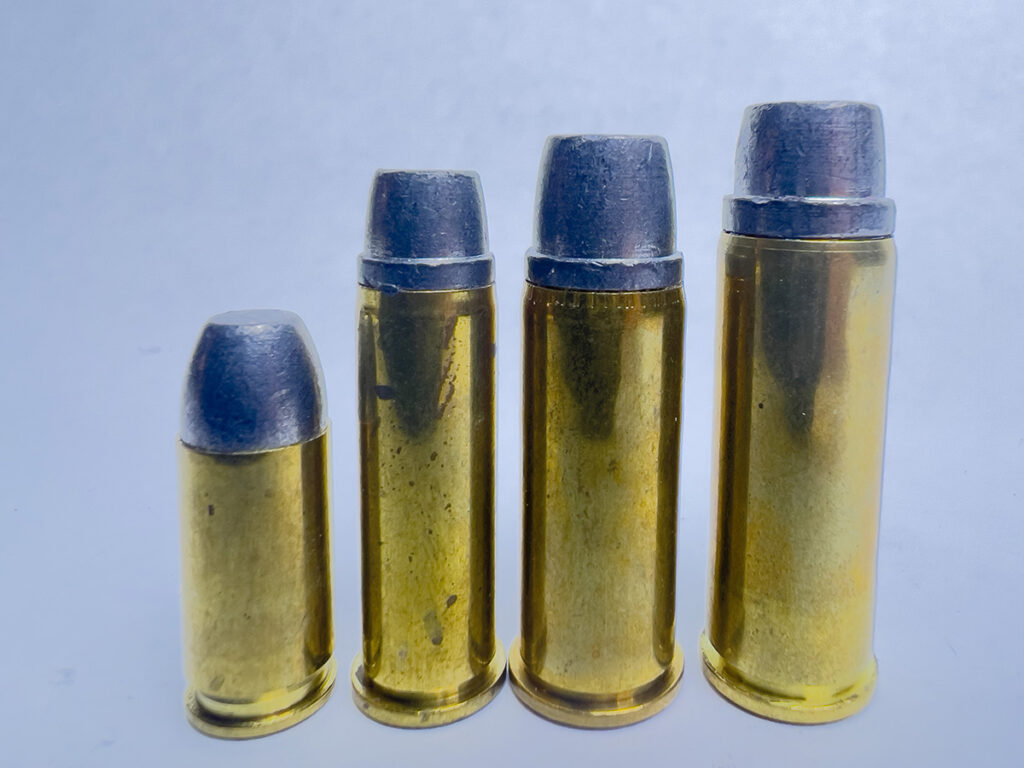

Raw killing power is more a function of the bullet than the gun, but the features of the gun do matter quite a bit. There is a bit of a dichotomy in that to get a certain level of handling you need a gun that is, by nature, easier to handle. Adjustable sights, excellent accuracy, smooth recoil and reliable functioning are musts in general, if you want to get the most out of placing your bullet with any certainty.
Going hard in one direction is what ends up happening quite often, with many guys opting for absolute maximum power over anything else. You won’t replace a rifle with a pistol; it just isn’t going to ever be feasible. If you’re a hiker or kayaker who camps with prepacked food, a rifle may be prohibitive for weight and fatigue when a handgun would serve emergency use better.
An optically equipped pistol of good power level can be very, very accurate. There is nothing wrong with having a .45 on your chest and a lightweight .22 LR rifle with 500 rounds stowed under board in a canoe. You don’t have to take just one in some cases, especially if your main goals are fishing or other recreational activities.
The Bear Essentials
Westerners reading this will probably disagree with me, but we’re talking apples and oranges here. What’s good for Michigan might not fly in Montana, but what is needed in the Crazies is just extra weight in the waters south of Traverse City. In all of the Midwest, a .45 ACP+P is pretty much guaranteed to be capable of handling any threat.
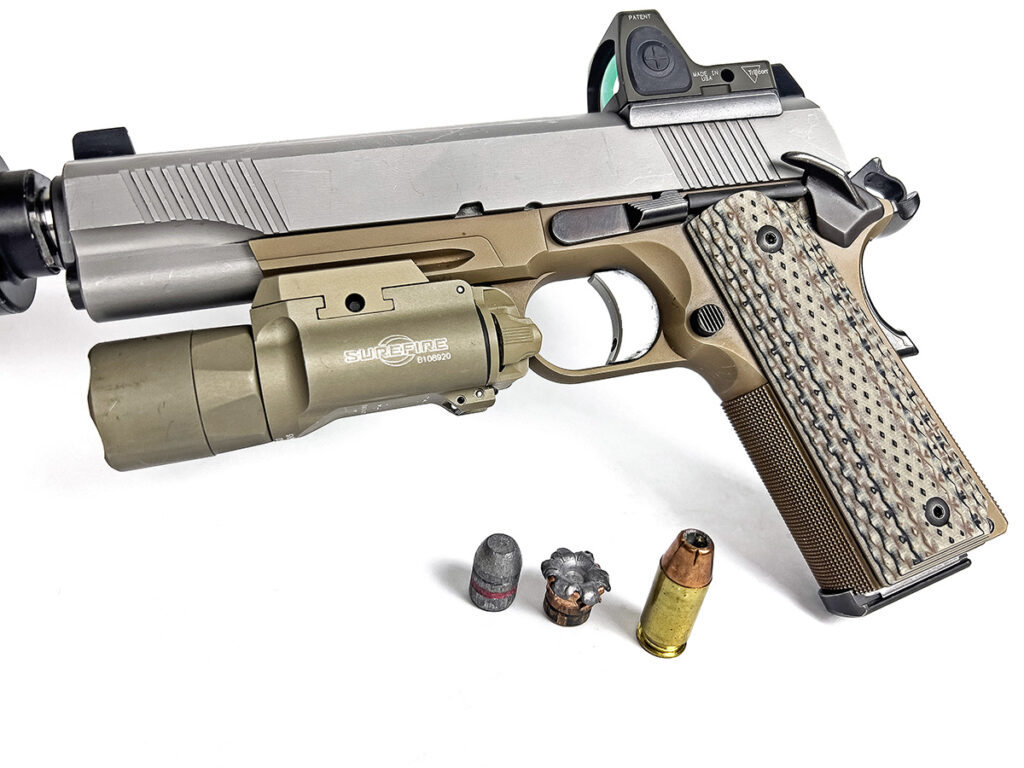

It’s still a heavily debated topic just how much gun you need when up against apex predators in close proximity. A debate centered on such a niche topic as bear attacks is what has inspired a market of guns and ammo on its own. Putting things bluntly, people are exponentially more likely to be killed by other people even in the woods as opposed to bears. Bear attacks are rare enough that they always make the news, sometimes even nationally.
Yet, in urban environments, we have murders daily, often multiples. I won’t get into a discussion about environmental pressures making bears attack when allegedly socioeconomic factors force people to kill unarmed clerks after a robbery and we must accept this as normal. Likewise, more people have been killed by other people in national parks and wilderness areas than wildlife. Most bullets meant for men will work on bears.
That said, this bear situation is very interesting, as it seems to be universal for discussion on field guns. It is absolutely true that there are many Americans who live around brown bears and their variants. Yet, the rate per million of attacks is extremely low annually, and in those attacks, there is no one caliber that seems to have set itself apart for being able to resolve the situation instantly. Bear attacks have made people extremely conscious of a problem that, while not impossible, is very rare. Yet, the remedy for this rare occasion is often a revolver of such power that it is impossible to master and will not yield better results than something “smaller.”
I’ve spent a good amount of time talking to everyone from cops to coroners to contractors on shootings, warfare, murders and all things in between, and the general consensus is that people kill with what they have on hand and make do with it. Very little out there, aside from premeditated murder is planned out; the vast majority of killing is done with little notice. I have some very cool stuff, a lot of which has appeared on these pages, but I’m not carrying a suppressed Fulton Armory M14 when I type at the coffee house. I’d get some looks. Most days, if I found myself attacked by a grizzly in my beach town, I’d have a .38 Special. I might make it.
Since the bear situation has dominated the field pistol discussion for some time, I’ll take a more practical look at what is really going on for this type of gun. Colt has quietly been releasing new versions of their classic lineup, and I hear there are some good things coming from S&W soon that appeal to the Elmer Keith fan in me. Many companies are starting to make 10mm Auto versions of 1911 and other pistols as standard models in their catalogs.
The debate on this chambering is hot even today, and I’m not a huge proponent of the 10mm as I have used it alongside .45 ACP in the field on large game regularly and really don’t see the effectiveness people talk about online. Given a choice between the two, I’d take .45 ACP all day. I have seen absolutely no difference in its killing effects opposed to 10mm, but I have seen a much greater degree of recoil and difficulty of mastery side-by-side.
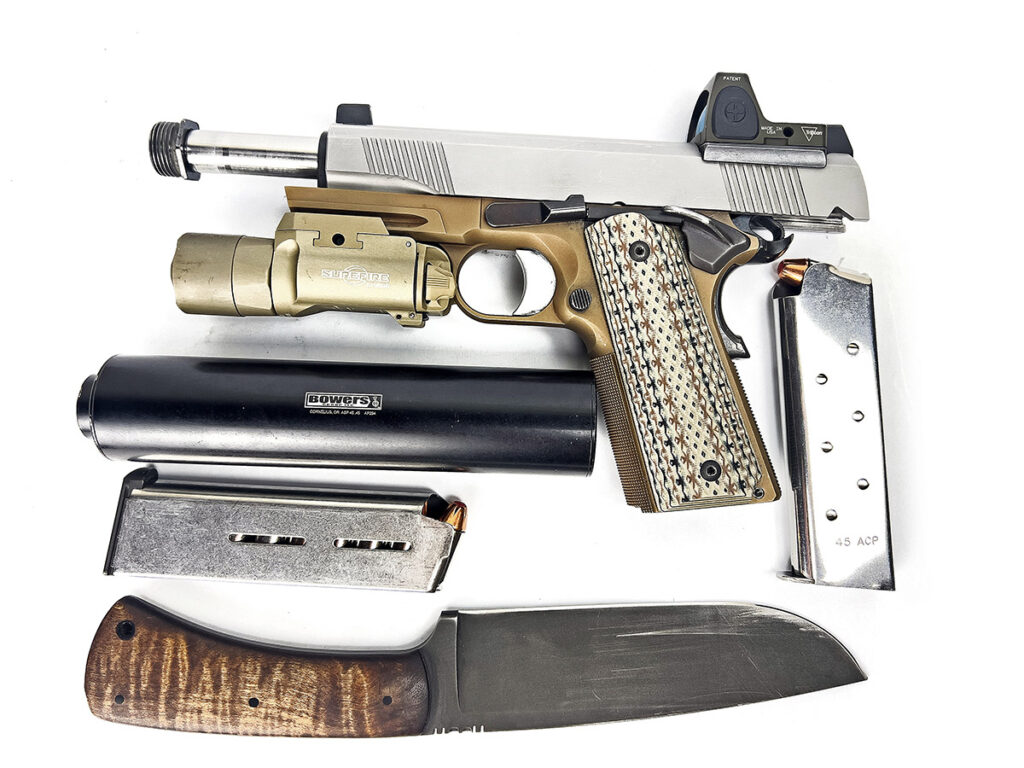

As a suppressor hunter, .45 ACP is also far more advantageous inside the effective range of both cartridges, being that it’s quieter with a wet suppressor than any bow out there at 40 yards—I know, to each their own. The debate is far, far from over but I remain deeply skeptical on the degree of need associated with the increase in power lacking a real mandate for it in practical terms.
The Old Guard
Since I mentioned Keith, a name any serious outdoorsman should know, we’ve got to look at what he really thought of as the ideal field gun. As a lifelong student of his work, I will say the man was a legend and has a deep-running influence on the handgun world as a result, but he was honestly presumptive in that he decided he was the authority when he published his famous 1929 article in American Rifleman, “The Last Word,” at age 30. (Keith was born in 1899.)
The thing was, Keith, in fact, did figure it out. His work with his “The Last Word” Colt SAA in .44 Special set the stage for all field guns in our modern era going back just a hair under a century. Yes, that 30-year-old kid did more to influence handguns with that one article than maybe any article ever. His time with pushing the .44 Special was truly special, and he perfected the field gun with his eventual legacy, the 44 Magnum. The initial .44 Magnum loads weren’t nuts by today’s standards, and a 240-grain Keith bullet at 1,200 fps from a 4-inch barrel is still, and likely always will be, one of the best field loads ever.
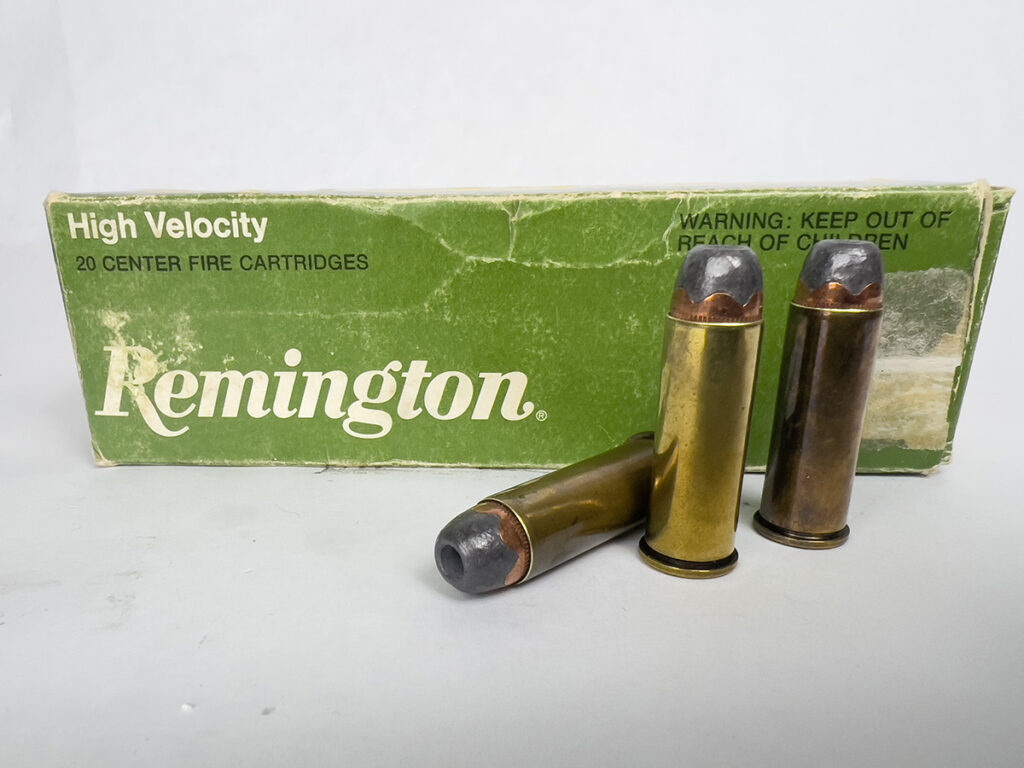

So, going back to a century ago, what did we know that we don’t seem to remember? For starters, the rampant consumerism of the industry wasn’t as prevalent before the advent of the internet and modular guns, the two feeding off each other to the point that we have a hard time introducing new things because the parts can’t be readily changed out.
The old days saw most guns being hand-fitted and finished, truly investments for the workingman and rich man alike. Smith’s pre-lock guns are highly sought-after, and I’ve had the pleasure of working with many guns from the era over time. The .44 Magnum was always very powerful, but people today don’t realize that this was by comparison to what was considered already powerful rounds. The guns that many of these rounds were housed in were often the weak spot.


For instance, the .45 Colt can be loaded far above .44 Magnum, but it requires a modern frame. The .45 Colt can be loaded up to some truly impressive numbers and deliver some serious lead down range, enough to make the .44 Mag. blush. However, most people are only familiar with the “safe” loads in .45 Colt, which are quite anemic and meant for cowboy replicas and original Colts SAA revolvers for safety.
It’s Dangerous to Go Alone … Take This!
Where you see the true utility of rounds like .44 Magnum is in their flexibility in terms of power, something that people today only look at the upper end. The beauty of these revolvers is that they can easily use lower-powered ammo. I really like shooting weak .38s in my .357 revolvers. Likewise, I like to load some light 180-grain lead bullets in .45 Colt with what remaining stock of IMR TrailBoss I have. It can be like shooting a .22 LR if you play it right.


Field guns, outside of the bear situation, are blessed with flexibility. This is something widely overlooked today due to the fact that to vary power in a semi-auto, you need an entirely different gun; you’re pretty much fixed at that cartridge power level. If you want sauce, go 10mm Auto. If you want power and easy handling, go .45 ACP. General use, well 9mm. In a .44 Mag. or .45 Colt, you can span the entire spectrum in one cylinder from popgun to piss-your-pants.
The old timers knew this, and this is what made field pistols great in practice. Ammunition was available everywhere; you could travel this country and find something that would work in your revolver in any hayseed town by the streams you’d pull over for.
Editor’s Note: This article originally appeared in the September 2025 issue of Gun Digest the Magazine.
More On Revolvers:
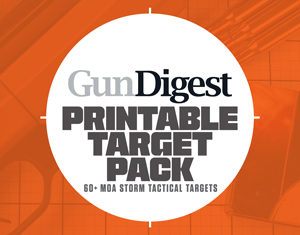

Next Step: Get your FREE Printable Target Pack
Enhance your shooting precision with our 62 MOA Targets, perfect for rifles and handguns. Crafted in collaboration with Storm Tactical for accuracy and versatility.
Subscribe to the Gun Digest email newsletter and get your downloadable target pack sent straight to your inbox. Stay updated with the latest firearms info in the industry.
Read the full article here






